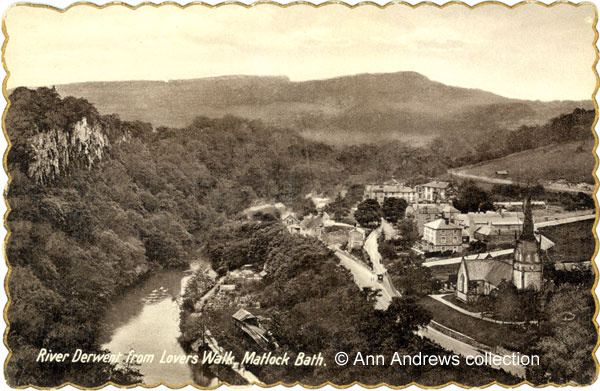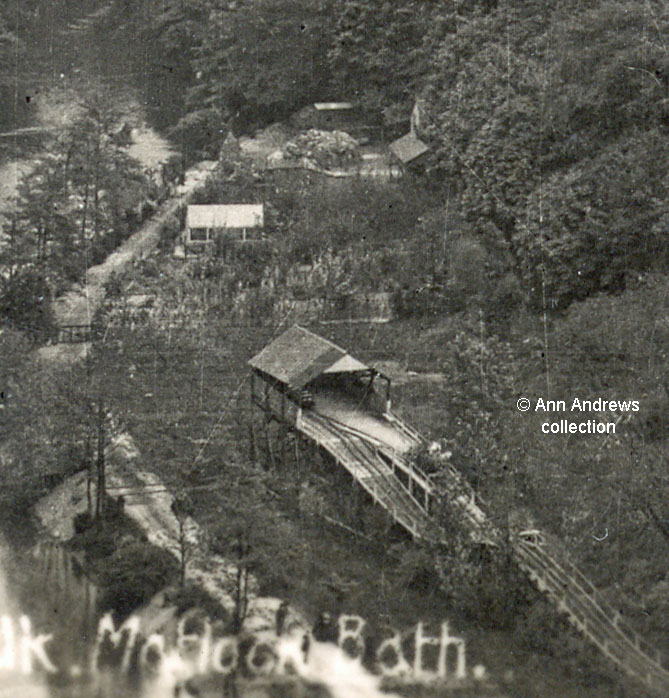|
Images Index> Matlock Bath, 20th and 21stC Images> This page |
| Matlock Bath: Derwent Gardens - from Lovers Walks, before 1905 |
| Matlock Bath : Twentieth Century Photographs, Postcards, Engravings & Etchings |
|
|||||
In the Derwent Gardens on the banks of the river is the southern end of the Switchback Railway and its shelter, where the cars were turned round so that passengers could begin the return journey of their ride. Holy Trinity Church, the bottom of Clifton Road and the New Bath Hotel are also in this picture. There is some development past the Derwent Gardens; a gate, shown clearly in the image below, divides this area off and there's a greenhouse and other buildings on the land, some of which were possibly storage sheds. One of the daughters of Herbert Buxton, was to live here for a number of years with her husband, Captain Arthur James Wyrill[1a]. John Higton, responding to some criticism of the Switchback that was published in 1889, believed that the switchback was "only a temporary structure, and can be removed without much difficulty when required"[1]. It was to last for over 40 years.
 Another version of this scalloped edged card may have been posted in 1926 but the image is identical to the top picture and the original photograph would have been taken over 20 years before.
It would have been an impossibility for more than one photographer to have captured this exact moment, as something would have moved in the scene. There are at least five pointers to show the images are identical, even if some of the postcards have had their edges cropped. The clues are:
Although somewhat later than these postcards, the quote and advert from Kelly's Directory of Derbyshire (1941) above is interesting. By then the switchback, which had given pleasure to many thousands of visitors over the years, had been taken down. Other pages where enlarged sections of the top image can be seen:
|
|||||
1. and 2. "River Derwent from Lover's Walk, Matlock Bath". No: 58.35. This has the same font style as Sneath's No. 2815 with the same title. 3. "River Derwent from Lover's Walk, Matlock Bath". "The Milton Series", Woolstone Bros. Renowned for Local Views, London EC1. Printed in Saxony. Unused. Another version, previously on this site (from 2003 to 2020), was posted in Matlock on 25 July 1926. All images © Ann Andrews collection. Researched, written by and © Ann Andrews. Intended for personal use only. |
|||||
|
[1] In the Matlock Absent Voter's List (1918) Arthur Wyrill is shown living at Vernon Cottage in Matlock Bath. He was a C.O. in the Mercantile Fleet Auxiliary [1] "Derbyshire Courier", 2 November 1889. Matlock and Its Grievances. [2] With grateful thanks to Susan Tomlinson
for checking her own collection and sending me a number of images
for comparison, including Sneath's No. 2815 - none of which are
published here. |







 A coloured
version of the same view was published by G. Marsden of Wirksworth
A coloured
version of the same view was published by G. Marsden of Wirksworth
